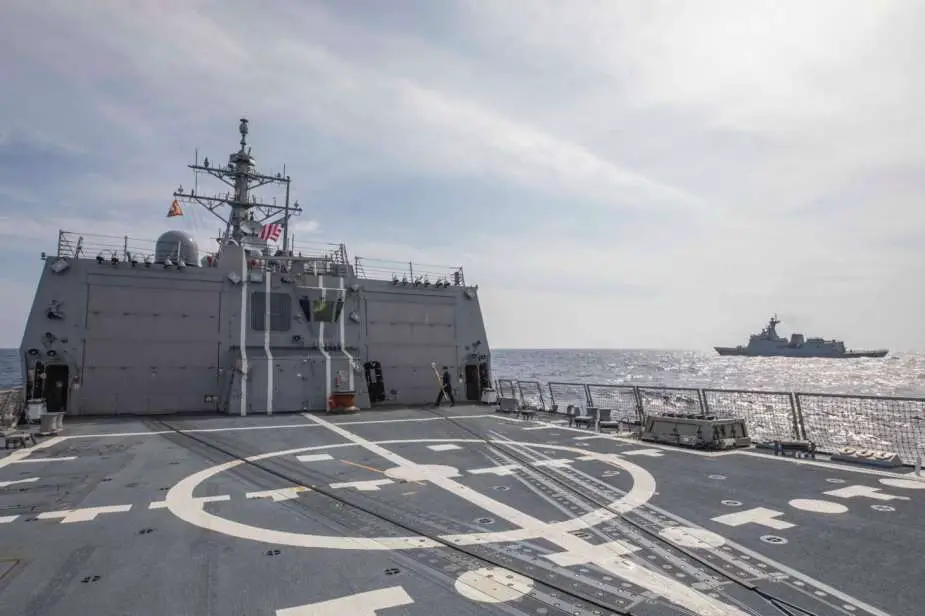Breaking news
US Navy's destroyer USS Ralph Johnson conducts drills with Philippines Navy.
According to information published by the US DoD on September 4, 2023, the United States and the Philippines embarked on a significant joint sailing operation in the South China Sea.
Follow Navy Recognition on Google News at this link
 During a bilateral sail in the South China Sea, the USS Ralph Johnson (DDG 114), an Arleigh Burke-class guided-missile destroyer, navigates side by side with the Philippine Navy's BRP Jose Rizal. (Picture source: US DoD)
During a bilateral sail in the South China Sea, the USS Ralph Johnson (DDG 114), an Arleigh Burke-class guided-missile destroyer, navigates side by side with the Philippine Navy's BRP Jose Rizal. (Picture source: US DoD)
The USS Ralph Johnson is a vessel from the Arleigh Burke-class of guided-missile destroyers, commissioned into the U.S. Navy's fleet. With a length of about 509 feet (155 meters) and a displacement of roughly 9,200 tons, the ship integrates advanced radar systems, specifically the AN/SPY-1D radar.
This component is integral to the Aegis Combat System, enhancing its capability to track and counter multiple threats simultaneously. The ship's weaponry comprises a variety of systems, including the Vertical Launching System (VLS) that can launch Tomahawk missiles, the Standard Missile for aerial threats, and the ASROC system designed for underwater threats. The ship is also equipped to carry two Seahawk helicopters, extending its operational capacity in various warfare domains.
Spanning an overall length of about 351 feet (107 meters) and displacing around 2,600 tons, the BRP Jose Rizal vessel is equipped with contemporary radar and sonar systems. This capability positions it to detect potential maritime threats effectively.
As a missile-capable frigate, the BRP Jose Rizal possesses an armament that includes surface-to-surface missiles, surface-to-air missiles, and torpedoes. Additionally, the ship has the capacity to host a helicopter, providing versatility in operations such as reconnaissance and anti-submarine warfare.
Both ships recently took part in division tactics (DIVTACS) during their bilateral sail. This at-sea training focuses on improving ship handlers' skills when maneuvering near other vessels, reinforcing the proficiency of bridge teams in handling challenging maritime situations. The event reflects the continuous efforts of both navies to enhance interoperability and maintain maritime security in the region.























